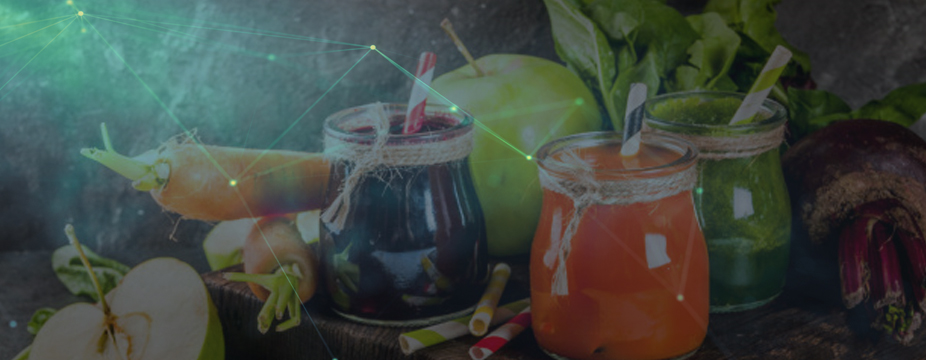|
Getting your Trinity Audio player ready...
|
The integration of big data technologies in the food and beverages industry can solve 90% of the problems. Despite industrial growth, emerging market trends, and evolving tech applications and their integrations, which intensify market competition and squeeze revenues. In this article, we discuss big data trends in the food and beverage industry.
How Big Data can be used in the Food and Beverage Industry?
AI and automation technologies are at the core of every business, Data Science and AI are optimizing the operations of the industry for the better. Whether it includes enhancing supply management systems or delivering quality food at restaurants-food and beverages have to go way beyond. Today the food and beverage industry is evolving as a prominent sector that is driving the growth of the global economy through globalization. Leveraging data science technologies helps the food and beverage industry to work efficiently in less time.
1. Transparency in supply-chain:
The food and beverage industry has foreseen losses due to improper inventory management and ended with unsatisfactory customers. And a prominent reason is contamination which decreased the life span of products during logistics. The big data tools help in maintaining transparency throughout the supply chain management by predicting the shelf-life, storage conditions, environmental demographics, contamination level in the air, etc. And the predictive models help in inventory assistance by alerting the owner when there is a shortage in inventory. And pre-programmed AI systems help in assorting, identifying, and segregating the inventory.
2. Value-added production and delivery system:
Leveraging data science and analytical models help in performing multiple regression models, that help in measuring the requirement of quality attributes while producing a product. Ex: The required level of PH balance while manufacturing a beverage. Manufacturing Analytics provides solutions to day-to-day challenges that reduce costs and improve the efficiency of productivity. The predictive and manufacturing analytical model helps in building strategies for optimizing production processes and innovating new products through customer and industrial data analysis.
* The AI-integrated data science application helps in optimizing the delivery and operation systems; by simulating communication between the internal and exterior systems that participate in the supply chain cycle. Monitoring various environmental factors that can delay delivery operations (climatic conditions, issues in transportation, storage factors, etc.) is an important practice of this application.
3. Predicting product shelf-life:
The real-time analysis of factors that decompose or increase the fungi quantity in food and beverages can be monitored and detected in-prior by using an analytical tool. Data engineers can detect the goods that are about to expire by leveraging predictive models. And it helps in maintaining the shelf-life of the products.
4. Sentiment analysis:
Sentiment analysis helps in improving customer services that further enhance customer satisfaction after consuming the end product. Sentiment analysis is the tabulation of data available on digital and non-digital platforms to drive insights from customer reviews, complaints, and information gathered from surveys and rating systems. Sentiment analysis helps in understanding the customer behavior patterns that can help in improving existing business operations. The food and beverage industries, by leveraging data analytics, NLP, and text mining tools, can quickly predict the customer’s satisfactory views at different nodes of the customer life cycle for offering better products and services.
5. Optimizing Marketing and Branding:
The food and beverage industry is experiencing potential growth after globalization. To withstand market competition, the industry is overspending on marketing and branding, squeezing the industry revenues. Market analytics helps in discovering new markets and outreaching a new target group of customers through analyzing industrial data and providing cost-effective solutions. Market analytics helps businesses in understanding the changing market dynamics for building better strategies. And digital analytical tools help in brand addressing through social and digital media platforms. Optimized marketing strategies help in building brand trust and winning loyal customers.
*Using market basket analysis, the business in the food and beverage industry can predict future customer purchases based on the history of the purchase list. Offering combo and value-added services can attract customers to increase repeatability. Market basket analysis is an emerging strategy of big data in the generation of marketing automation.
Key Takeaways:
In this article, we discussed how using big data effectively allows the food and beverage business to secure its share of the market. The key points discussed include:
- The top five ways big data analytical tools can be leveraged to optimize: Inventory and order management, Resource management, Traceability, CRM, sales, publicity, marketing, and product recall management.
- To devise solutions in an efficient and timely manner the business needs data science technology that can interpret the data in a meaningful way to optimize the above-mentioned functionalities in a business.
Do let us know if you resonate with our blog.
If you need any help with idea validation, proof-of-concept, Data Science consulting, large-scale AI implementation, Big Data Engineering, or a creative solution for your Big Data data. You are at the right place.
Talk to our experts
